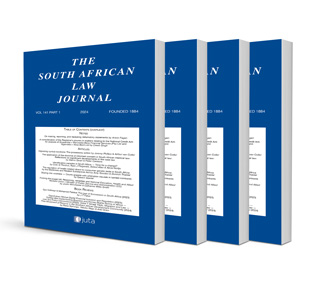International best practice and a revised Code for Responsible Investing in South Africa

International best practice and a revised Code for Responsible Investing in South Africa
Author: Natania Locke
ISSN: 1996-2177
Affiliations: Associate Professor, Swinburne University of Technology; Visiting Professor, University of Johannesburg
Source: South African Law Journal, Volume 140 Issue 3, p. 550-578
https://doi.org/10.47348/SALJ/v140/i3a6
Abstract
The much anticipated Second Code for Responsible Investing in South Africa (‘CRISA 2’) was published in September 2022. This article explores the evolution of the soft-law environment in which the code operates and reaches the conclusion that the revision was both timely and necessary. A comparison between CRISA 2 and recent trends in investor stewardship codes and regulation shows that CRISA 2 has kept pace in some respects but still lags in others. The move to ‘apply and explain’ falls in line with King IV and the approach of the UK Stewardship Code 2020. The extension of its application to all investment types rather than solely shares is an improvement. The code retains its focus on responsible investment — an aspect only recently adopted internationally in comparative codes — but has opted not to shift to sustainability language despite contemplating this approach in the draft. This may have been a missed opportunity. Aspects that could improve include considering engagement outside of voting; more express duties for service providers, including proxy advisors; the need to ascertain client and beneficiary needs; and more accessible language. Annual reporting and oversight remain with an industry body, which makes greater reporting doubtful.